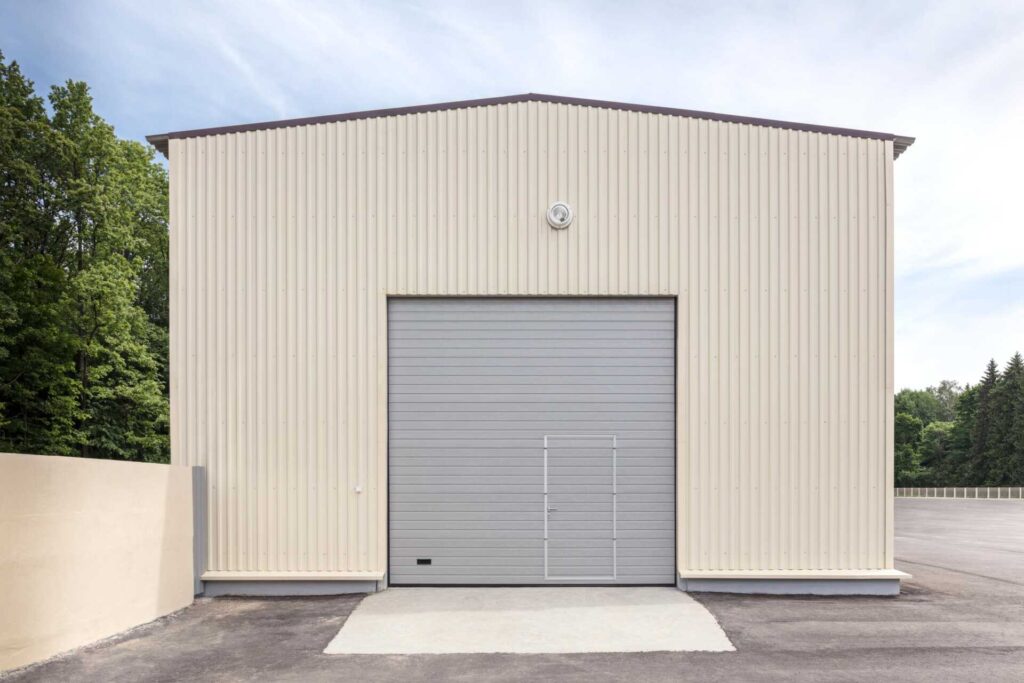
Contents
Exploring budget-friendly solutions can be a game-changer when optimizing costs for industrial metal buildings. From smart roofing choices to eco-friendly materials, some strategies won’t break the bank. Focusing on key areas like insulation and construction methods can pave the way for a financially savvy and efficient industrial metal building.
Key Takeaways
- Choose repurposed steel for cost-effective and sustainable construction.
- Apply resilient coatings to extend roof lifespan and reduce repair costs.
- Opt for energy-efficient insulation like thermal coatings for savings.
- Implement efficient lighting with LED fixtures and motion sensors.
- Consider modular construction for reduced labor, waste and quicker project completion.
Cost-Effective Roofing Solutions
When searching for cost-effective roofing options for industrial metal structures, consider choosing durable materials that offer long-term cost savings. One key aspect to focus on is the application of resilient coatings. These coatings act as a protective shield, guarding the roof from harsh elements like UV rays, moisture, and debris.
By investing in quality coatings, you can extend the lifespan of your roof, reducing the necessity for frequent repairs and replacements.
Alongside resilient coatings, cost-effective upkeep plays an important role in preserving the integrity of your industrial metal building’s roof. Regular inspections and proactive repairs can help address minor issues before they escalate into major concerns. This preventive approach saves you money in the long term and ensures that your roof remains structurally sound and secure.
When considering cost-effective roofing options, striking a balance between initial expenses and long-term savings is crucial. While investing in high-quality materials and coatings may entail a slightly higher initial cost, the decreased need for frequent repairs and replacements ultimately leads to significant savings over time.
Energy-Efficient Insulation Options
Explore enhancing the energy efficiency of your industrial metal building by examining various insulation options that can contribute to long-term cost savings.
Two key options to explore are thermal coatings and reflective barriers.
Thermal coatings are a cost-effective solution that can be applied to the interior of metal building roofs and walls. These coatings work by reducing heat transfer, helping to maintain a comfortable temperature inside the building. By minimizing heat loss in the winter and heat gain in the summer, thermal coatings can lead to reduced energy consumption and lower utility bills.
Reflective barriers are another energy-efficient insulation option that can be installed in industrial metal buildings. These barriers are designed to reflect radiant heat, preventing it from entering the building. By keeping the building cooler in hot weather and warmer in cold weather, reflective barriers help to regulate indoor temperatures and reduce the workload on heating and cooling systems.
When selecting insulation for your industrial metal building, take into account the climate in which the building is located and the specific energy efficiency needs of your operation. By investing in thermal coatings and reflective barriers, you can improve the energy efficiency of your building and create a more comfortable environment for your employees, all while saving on long-term energy costs.
Sustainable Material Selection Tips
For the best long-term durability in your industrial metal building, carefully select materials that prioritize longevity and eco-conscious attributes. One of the most advisable choices for metal buildings is to use repurposed steel. Repurposed steel decreases the environmental impact of mining and manufacturing new steel and maintains the same strength and durability as fresh steel. By choosing repurposed steel in your construction, you contribute to a more environmentally aware building industry.
In addition to using repurposed steel, incorporating environmentally friendly coatings can further enhance the endurance of your industrial metal building. Environmentally friendly coatings are formulated to have minimal volatile organic compounds (VOCs), reducing harmful emissions into the environment. These coatings are also designed to be long-lasting, which can help extend the lifespan of your building while minimizing the need for frequent maintenance or repainting.
When selecting materials for your industrial metal building, consider each choice’s environmental impact. Look for suppliers that offer repurposed steel options and inquire about the availability of eco-conscious coatings. By making these durable material selections, you not only contribute to a greener future but also create a resilient and environmentally responsible industrial metal building.
Efficient Lighting Strategies
Implementing strategic lighting solutions is key to enhancing energy efficiency and functionality in your industrial metal building. Incorporating natural daylighting through skylight installation can greatly reduce the need for artificial lighting during daylight hours, cutting down on energy costs.
When artificial lighting is necessary, opt for energy-efficient LED fixtures that consume less electricity and have a longer lifespan compared to traditional lighting options.
Consider installing motion sensor controls in areas with infrequent foot traffic to make sure lights are only activated when needed, further conserving energy. These sensors can detect movement and automatically turn lights on and off, eliminating the chance of lights being left on in unoccupied areas.
This saves energy and prolongs the life of the lighting fixtures.
Streamlined Construction Techniques
Implementing effective and updated construction techniques is crucial for optimizing the building process of industrial metal structures. When aiming for cost-efficient and time-saving solutions, prefabricated structures and modular construction methods stand out as top choices.
Prefabricated structures involve assembling components off-site and streamlining the construction phase by reducing on-site labor and material waste. This approach accelerates the project timeline and guarantees consistency in quality due to the controlled manufacturing environment.
Modular construction, on the other hand, involves constructing individual sections or modules in a factory setting before transporting them to the construction site for assembly. This technique allows for simultaneous work on different modules, notably cutting down the overall construction duration. The precision and efficiency achieved through modular construction contribute to cost savings and increased productivity.
Additionally, the flexibility of modular construction enables easy expansion or reconfiguration of industrial metal buildings in the future, catering to evolving business needs.
Review
By implementing budget-friendly solutions for industrial metal buildings, you’ll be saving money left and right!
From cost-effective roofing options to energy-efficient insulation choices and eco-friendly materials, you’ll be amazed at how much you can save in the long run.
With efficient lighting strategies and streamlined construction techniques, your industrial metal building will be both cost-effective and environmentally friendly.
So go ahead, embrace the savings, and enjoy the benefits of a smart investment!
Recent Posts
What Are the Benefits of Tailored Metal Structures?
Imagine a well-crafted suit tailored to fit perfectly; that’s how tailored metal structures operate in
3 Tips for Long-lasting Metal Commercial Structures
When it comes to metal commercial structures, you’ll want to focus on a few key
Explore Benefits of Residential Metal Structures
It’s funny how you might stumble upon the idea of residential metal structures just when




